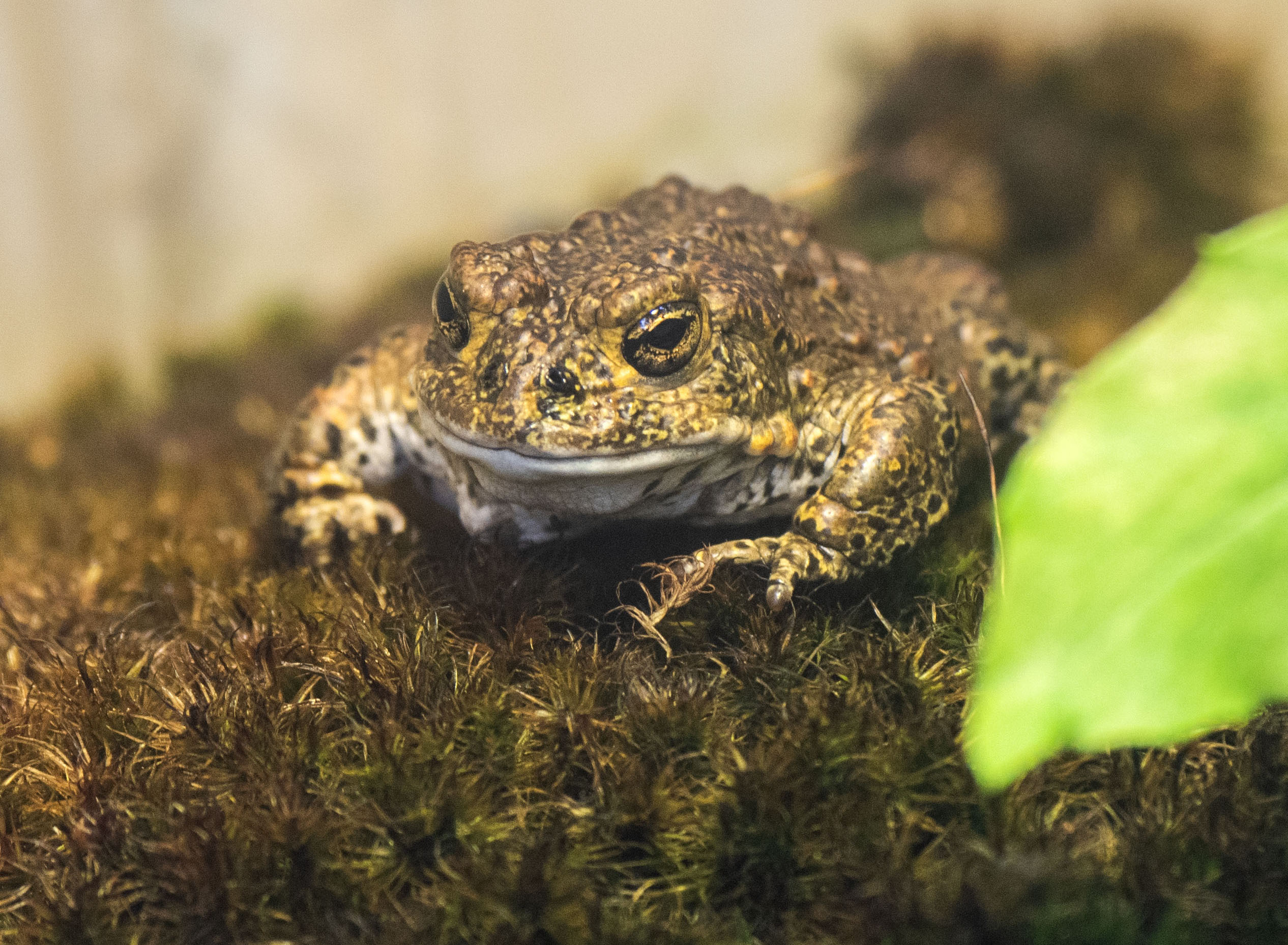Yosemite Toad
Anaxyrus canorus

In the Zoo
Exploration Zone
Fascinating Facts
Yosemite toads walk instead of hop, and they can walk up to a mile from their burrow to a breeding site. They have a mellifluous courting song and were given the scientific name “canorus”, which means “tuneful”, in honor of their notable call. The San Francisco Zoo & Gardens participates in a breeding and release program for Yosemite toads, restoring them to their native habitat.
Physical Characteristics
Yosemite toads are one of the most sexually dimorphic of the toad species, that is, males and females differ greatly in appearance. Yosemite toads are approximately 2 – 3 inches in length, with females generally larger. They are stocky, with bumpy skin. Females are paler with dark spots, while males are a uniform olive or yellowish green color.
Diet
Habitat
Yosemite toads live in high altitude forests, meadows and wetlands, with both suitable breeding and overwintering areas.
Range
They are found in the Sierra Nevada range from Alpine to Fresno County https://www.iucnredlist.org/species/3180/118972917
Social Behavior
Breeding takes place from May – July, with males becoming sexually mature between 3 – 5 years and females between 4 – 6 years. Males will call to attract a mate. Females will breed every other year and will lay 1,000 – 2,000 eggs in a vernal pool, usually a snowmelt pond. Eggs will hatch after 1 – 2 weeks and tadpoles will metamorphose between 4 – 6 weeks. To feed, they will lie in wait and capture prey with their sticky tongue. Yosemite toads are diurnal, taking advantage of the warm sunlight to hunt during the day, and they will hibernate amongst tree roots or in an abandoned burrow overwinter. The lifespan for a Yosemite toad is up to 15 years for females and up to 12 years for males.
Status in the Wild
IUCN – Vulnerable
Other:
Yosemite toads are threatened by habitat fragmentation and destruction, with climate change exacerbating threats such as forest fires and drought. In addition, they are also vulnerable to the chytrid fungus, a disease affecting amphibians.
